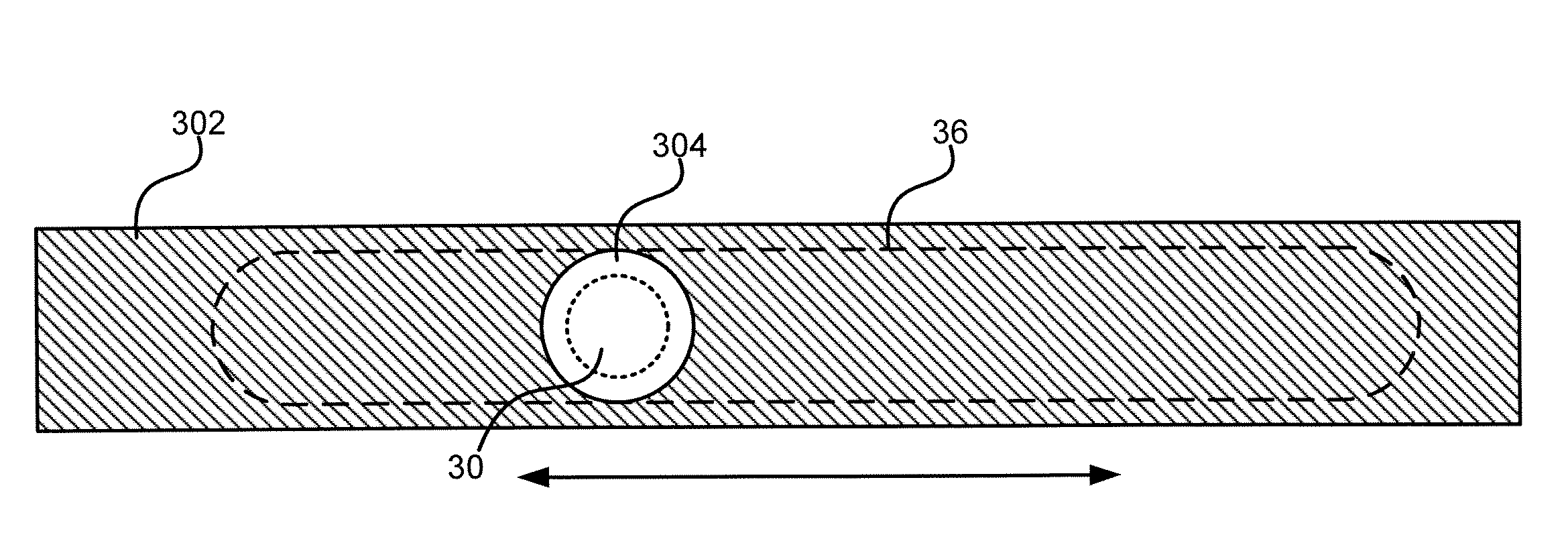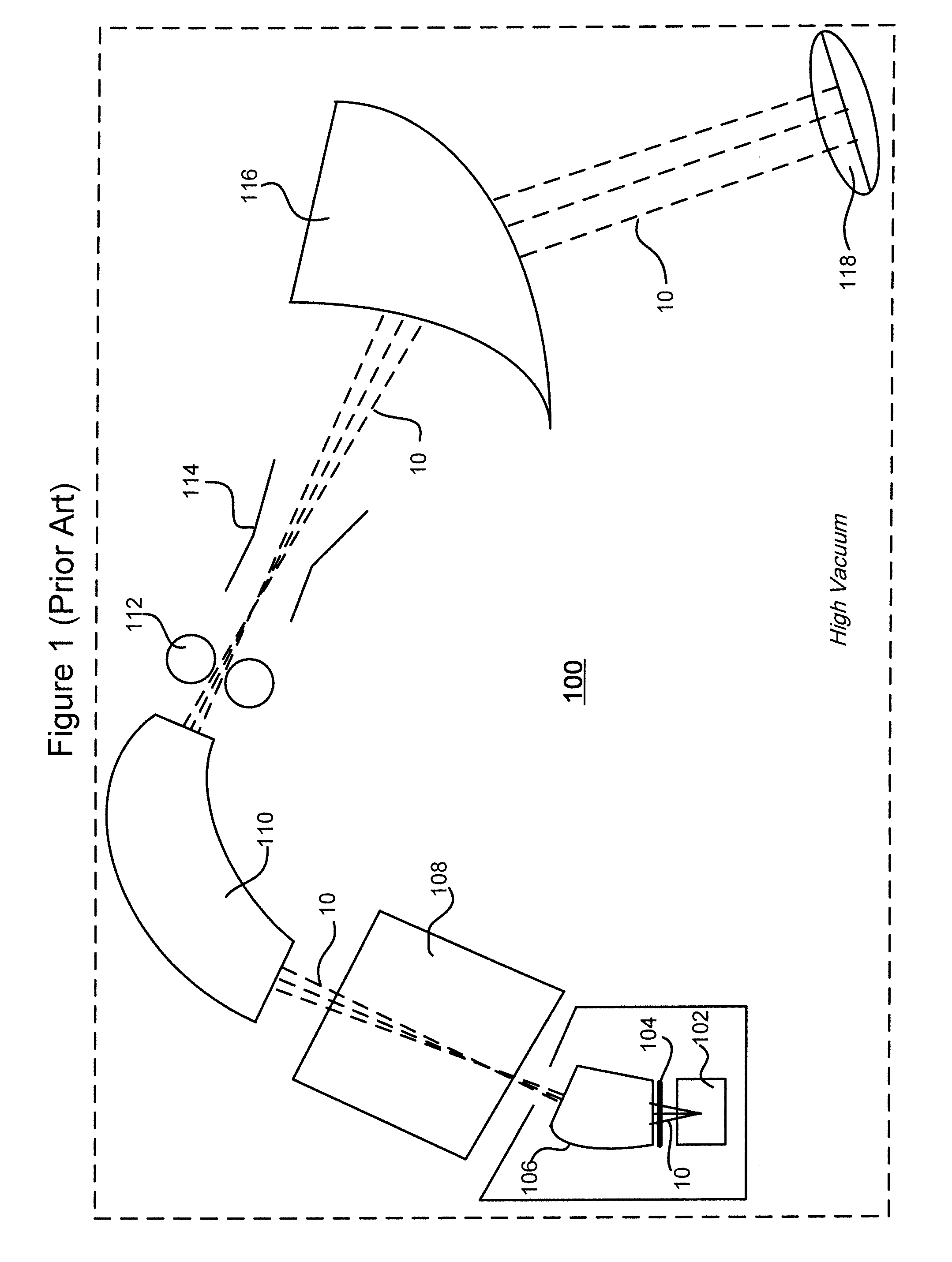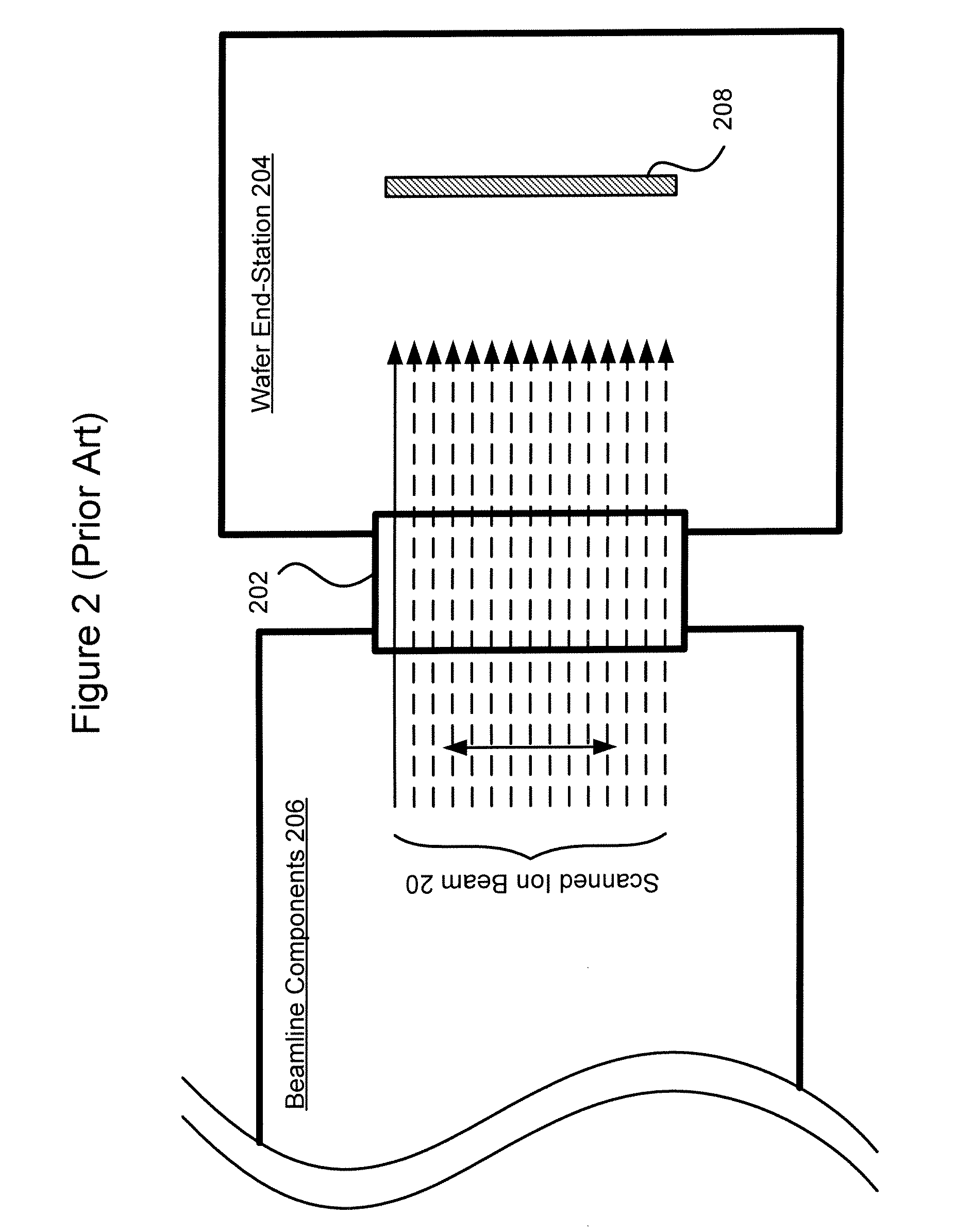Techniques for preventing parasitic beamlets from affecting ion implantation
a technology of ion implantation and beamlet, which is applied in the field of semiconductor manufacturing, can solve the problems of affecting the ion dosimetry system of the ion implanter, affecting the charge-state assumption on which the ion dosimetry system is based, and causing deceleration effects
- Summary
- Abstract
- Description
- Claims
- Application Information
AI Technical Summary
Benefits of technology
Problems solved by technology
Method used
Image
Examples
Embodiment Construction
[0046] Embodiments of the present disclosure provide various techniques to prevent parasitic beamlets (e.g., those generated as a result of photoresist outgassing) from affecting ion implantation. According to some embodiments, a moveable aperture may be implemented to limit downstream transport of parasitic beamlets. The moveable aperture may be as small as a static spot beam and may move in synchronization with scanning movement of the spot beam. An added effect of the moveable (or scan-synchronized) aperture is to limit upstream migration of outgassed particles. According to other embodiments, a plurality of baffles may be positioned in a beam path and aligned with desired ion trajectories, thereby filtering out unwanted parasitic beamlets.
[0047] Referring to FIGS. 3A and 3B, there is shown an exemplary implementation of a moveable aperture in accordance with an embodiment of the present disclosure. FIG. 3A shows a front view of an aperture mechanism 300, and FIG. 3B shows a top...
PUM
 Login to View More
Login to View More Abstract
Description
Claims
Application Information
 Login to View More
Login to View More - R&D
- Intellectual Property
- Life Sciences
- Materials
- Tech Scout
- Unparalleled Data Quality
- Higher Quality Content
- 60% Fewer Hallucinations
Browse by: Latest US Patents, China's latest patents, Technical Efficacy Thesaurus, Application Domain, Technology Topic, Popular Technical Reports.
© 2025 PatSnap. All rights reserved.Legal|Privacy policy|Modern Slavery Act Transparency Statement|Sitemap|About US| Contact US: help@patsnap.com



